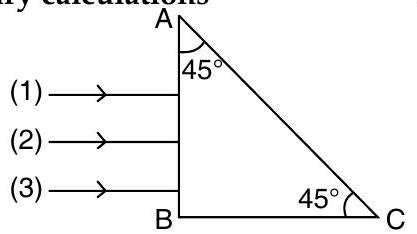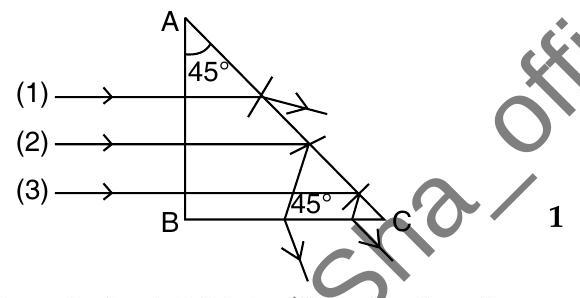ray-optics-and-optical-instruments Question 34
Question: Q. 3. Three rays
U] [OD 2017]

Show Answer
Solution:
Ans. At plane

Let critical angle for total internal reflection for ray
Hence
Let critical angle for total internal reflection for ray
Hence
Let critical angle for total internal reflection for ray
Hence
As in case of ray 1 , incident angle is less than critical angle, it would emerge out from
In case of ray 2 , ray 3 , incident angle is greater than critical angle, they would get total internal reflection at






